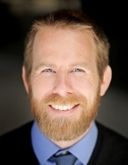A new regional health coalition working to address one of Moab’s top community health concerns is bringing two addiction medicine specialists from the University of Utah to Moab Regional Hospital this week.
Medical care providers and administrators from multiple agencies as far south as Monument Valley formed the Southeastern Utah Medicine Coalition in early 2015 to address substance-abuse disorders more effectively through collaboration.
Its first initiative brings Dr. Elizabeth Howell and Dr. John Mahan to work on Friday, Feb. 12, alongside local primary-care physicians treating patients with substance-abuse disorders.
The two specialists from the University of Utah School of Medicine will establish referral routines and patient treatment program protocols with physicians at Moab Family Medicine and Moab Regional Medical Clinic, before continuing south to visit additional health-care facilities in the region.
“The coalition will get everyone on the same page treating patients who are dealing with addiction,” Four Corners Community Behavioral Health Clinic Director Holly Long said. “It has been really exciting to be part of it from the beginning; it’s helped us feel connected to the rest of the medical community that we’re now teaming up to address these issues.”
Howell and Mahan will not be working individually with patients this month, so anyone who is seeking help should make an appointment with their family practice physicians and advise them that they would like to consult with a specialist.
Substance-abuse disorder was identified in a 2013 Community Health Needs Assessment survey distributed by Moab Regional Hospital as one of the region’s top three health concerns.
A multitude of other physical, emotional and social problems can stem from substance abuse, according to Moab Regional Hospital Clinical Medical Health Counselor Antje Rath.
Often, though, patients do not consider it their primary health issue. The specialists from U of U will help people like Rath by introducing tools to make it easier for patients and their providers to address addiction head-on.
“They will be able to help with prescription medication,” Rath said. “If you have substance abuse problems, but have pain, doctors don’t want to give you opioids to treat the pain. These specialists will help navigate that, and I hope will bring alternative medications.”
Working primarily with self-referred patients, Rath said she appreciates holistic approaches to addressing patients’ needs.
Young people in Moab are at a significantly higher risk of substance abuse than the state average, according to the 2013 Utah Student Health Risk Prevention Survey. Addressing substance abuse in parents is key to addressing substance abuse in children, said Kelly Vagts, a social worker at Helen M. Knight Elementary and Grand County Middle School.
“It is huge,” she said. “The degree of success I have in what I do with the kids is affected dramatically if I’m continually sending them back to a toxic environment. Positive attachment to a parental figure is the core of everything. It affects all their neurological attachments.”
When a parent is struggling with substance abuse, and children’s needs are inconsistently or never met, neurological patterns are formed that result in anxiety, behavioral disorders, attachment disorders and other mental illnesses with profound and lasting consequences on the child’s potential, she said.
“The good news is, we can create new networks, especially in kids,” she said.
When parents are treated and become accountable for creating new behavior patterns, and therapy and counseling for children is reinforced in the home environment, things get better quickly, Vagts said.
The first indicators of success are higher grades, improved behavior and improved peer relations in their children – all of which lessen the likelihood that children will become addicted to harmful substances themselves later in life.
“In a perfect world, we would have had structures in place to address addiction 10 years ago,” Moab Regional Hospital Director of Community Relations and Program Development Sarah Shea said. “Prevention is really where it’s at; eventually you want to be pouring all your resources into programs that successfully address substance abuse before it starts. But in order to solve the problem, you have to treat the people currently struggling with addiction.”
With the current initiative, the coalition is primarily addressing substance abuse issues that arise in a clinical setting. A disorder as intensely personal as addiction is not easy to address in a medical environment centered primarily on physical rather than mental well-being, Shea said.
However, with the support of the specialists from the University of Utah, primary-care physicians will be able to move into that territory more readily, and more confidently treat patients for physical ailments with less risk of contributing to addiction problems.
Utah Support Advocates for Recovery Awareness Peer Recovery Coach Tara Wilder, who is also a member of the Moab Community Action Coalition, works closely with those suffering from the disorder. She said she is glad to hear that the medical community is addressing existing addiction problems, and welcomes future collaborative efforts.
“We need people to come together and bring ideas to the table,” she said. “An ounce of prevention is worth five pounds of intervention.”
The Southeastern Utah Medicine Coalition includes Moab Regional Hospital, Utah Navajo Health Systems, Blue Mountain Hospital, San Juan Health District, San Juan Counseling and Four Corners Community Behavioral Health.
The addiction medicine specialists will spend five days a month rotating to health-care facilities in Montezuma Creek, Monument Valley and Moab, and the coalition is looking forward to utilizing their expertise, while establishing stronger relationships throughout the entire medical community, Shea said.
Coalition teams local health-care professionals with regional substance abuse specialists
It has been really exciting to be part of it from the beginning; it’s helped us feel connected to the rest of the medical community that we’re now teaming up to address these issues.




